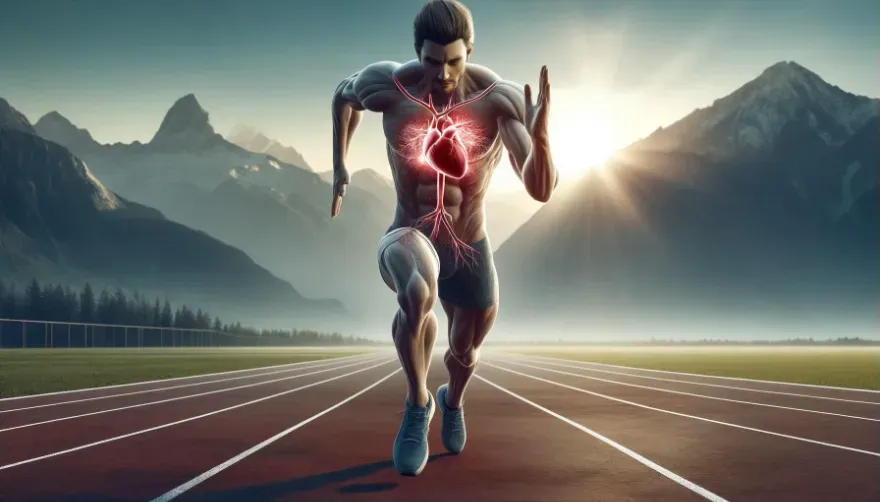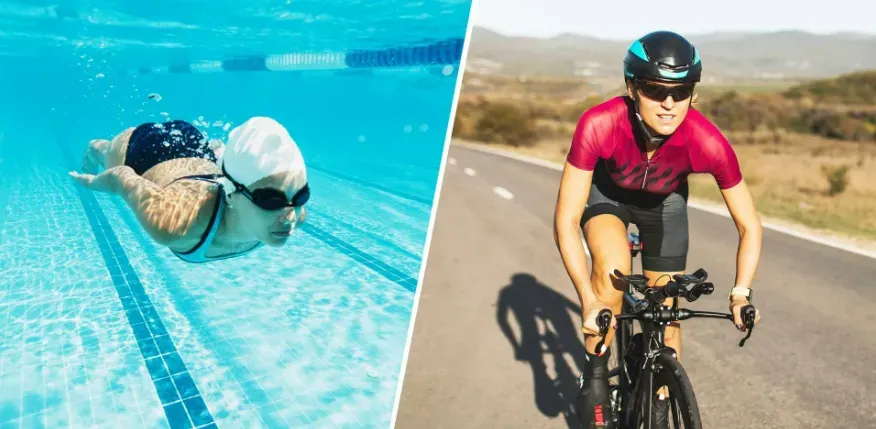Why VO2 Max is the Key Predictor of Lifespan and Athletic Performance
The Significance of VO2 Max in Predicting Lifespan
Comparative Importance of VO2 Max and Traditional Biomarkers
VO2 Max stands out as a profound indicator of lifespan, surpassing traditional biomarkers in predicting longevity. Unlike biomarkers that can be altered rapidly, such as vitamin D levels through supplements, VO2 Max reflects the cumulative effect of physical activity and cardiovascular health. Studies have repeatedly shown that higher VO2 Max levels correlate with a significantly reduced risk of all-cause mortality, regardless of factors like smoking status, diabetes, or heart disease.
Consider a patient with end-stage kidney disease or heart disease. While these conditions undeniably impact lifespan, the VO2 Max remains a stronger predictor. This is due to its comprehensive integration of various physiological functions, from cardiovascular to respiratory systems, embodying an individual's overall physical capacity. Such robust integration offers a more stable and reproducible measure, making it an invaluable tool for both clinical assessments and personal health evaluations.
Furthermore, VO2 Max is not easily manipulated in the short term. Unlike other biomarkers that can show rapid changes through diet or medication, improving VO2 Max requires consistent and sustained physical activity. This makes it a more reliable marker of long-term health and fitness.
How VO2 Max Ranks Against Other Health Indicators
Traditional health indicators like hypertension and blood glucose levels certainly play crucial roles in disease management, but their predictive power for lifespan pales in comparison to VO2 Max. For example, a non-smoker with controlled diabetes might still face significant health risks. However, if this individual maintains a high VO2 Max through regular exercise, their overall longevity could be better predicted.
Moreover, VO2 Max is a more dynamic measure, sensitive to the cumulative effects of lifestyle changes over time. This makes it an exceptionally reliable marker for long-term health. It’s not merely a snapshot of current health status but a reflection of sustained physical fitness, underscoring the importance of regular physical activity in prolonging life.
Key Points:
- VO2 Max: A reliable predictor of longevity.
- Dynamic Measure: Reflects cumulative lifestyle changes.
- Comparative Analysis: Outperforms traditional biomarkers like hypertension and blood glucose levels.
The Role of VO2 Max in Athletic Performance
VO2 Max in Different Sports
VO2 Max is often referred to as the gold standard for measuring cardiovascular fitness, yet its importance can vary significantly across different sports. In swimming, the athlete's aerobic capacity is crucial due to the unique resistance presented by water. High VO2 Max is essential as it directly influences the ability to sustain high-intensity efforts over prolonged periods.
In contrast, sports like cycling and running involve additional factors such as aerodynamic efficiency and mechanical resistance. While VO2 Max is still important, its role as a predictor of performance is more nuanced. Elite cyclists, for example, must balance their aerobic capacity with efficiency in energy expenditure and power output, especially in events like the Tour de France where endurance over varying terrains is crucial.
VO2 Max in Swimming
Swimming presents a unique set of challenges where VO2 Max can be a dominant predictor of performance. The resistance of water necessitates a high aerobic capacity to maintain speed over long distances. Unlike cycling or running, the efficiency of movement in water is less influenced by external factors, making VO2 Max a more straightforward predictor of endurance performance.
Swimmers with high VO2 Max are better equipped to sustain intense efforts, enabling them to excel in longer events. This is evident in the training regimens of elite swimmers, which emphasize increasing VO2 Max through high-volume, high-intensity workouts, focusing on building both cardiovascular and muscular endurance. Michael Phelps, for instance, is renowned not only for his technique but also for his exceptional aerobic capacity, which has been a cornerstone of his training.
Training Focus for Swimmers:
- High-Volume Training: Increases aerobic capacity.
- High-Intensity Workouts: Enhances cardiovascular and muscular endurance.
- Consistency: Regular, sustained efforts to maintain VO2 Max levels.
Limitations of VO2 Max in Predicting Endurance Performance
Maximum Sustainable Energy Expenditure
Even with a high VO2 Max, athletes face the challenge of maximum sustainable energy expenditure. This concept revolves around the balance of energy input and output. Elite athletes often burn an immense number of calories, necessitating a proportional intake to avoid deficits that can impair performance and recovery.
For instance, during high-intensity training cycles, an athlete's caloric needs skyrocket. Failing to meet these demands can lead to energy deficits, impacting performance and increasing injury risk. Therefore, while VO2 Max is critical, sustaining high performance also requires meticulous attention to nutrition and energy balance. Chris Froome, an elite cyclist, has to consume thousands of calories daily during the Tour de France to meet his energy demands.
Importance of Caloric Input and Output Balance
Proper caloric intake is crucial for supporting high VO2 Max and overall performance. An imbalance where caloric output consistently exceeds input can lead to energy deficits, hampering an athlete's ability to train effectively and recover properly. This balance becomes even more critical in endurance sports where the energy demands are exceptionally high.
Athletes must adopt dietary strategies that ensure adequate energy provision without compromising other aspects of nutrition. This often involves nutrient-dense, high-calorie foods that can be digested efficiently. Monitoring and adjusting dietary intake in response to training loads is essential to maintain peak performance levels and prevent overtraining.
Nutritional Strategies:
- Carbohydrate Loading: Provides immediate energy.
- Balanced Macronutrients: Includes proteins for recovery.
- Regular Monitoring: Adjusts intake based on training intensity.
Contextual Variability in Predictive Power
Specificity in Training for Different Sports
The predictive power of VO2 Max can vary significantly based on the context and specificity of the sport. In track cycling, short bursts of high intensity demand a different set of physiological attributes compared to the sustained efforts required in road cycling. Thus, athletes specializing in different disciplines may show divergent VO2 Max values and still achieve peak performance in their respective fields.
For example, a track cyclist might have a higher VO2 Max due to the short, intense nature of their events, while a road cyclist might focus more on maximum sustainable power output over longer distances. Training programs must therefore be tailored to enhance the specific demands of the sport, balancing VO2 Max improvement with other critical performance factors.

Comparing Track Cycling and Tour de France Riders
Track cyclists, who specialize in short, intense events, often exhibit higher VO2 Max levels due to their focus on explosive power and speed. Their training involves high-intensity intervals that push their aerobic capacity to the maximum. In contrast, Tour de France riders must prioritize endurance and energy efficiency, balancing their aerobic capacity with the ability to sustain power output over varied and extended terrains.
These differences highlight the necessity of sport-specific training approaches. While a high VO2 Max is advantageous, it must be complemented with targeted training that develops the unique skills required for each sport. This specificity ensures that athletes are not only fit but also optimally prepared for the demands of their competition.
Key Training Differences:
- Track Cyclists:
- High-Intensity Intervals
- Focus on Explosive Power
- Short Duration Efforts
- Tour de France Riders:
- Endurance Training
- Energy Efficiency
- Long Duration Efforts
Enhancing Performance Insights Beyond VO2 Max
The Role of Power at VO2 Max
While VO2 Max provides valuable insights, measuring power output at VO2 Max can offer an additional layer of understanding about an athlete's performance capabilities. For instance, two athletes with the same VO2 Max might differ significantly in their power output. This difference can be crucial in endurance events where sustained power is key.
For example, if Athlete A and Athlete B both have a VO2 Max of 80 ml/kg/min, but Athlete A can sustain 450 watts while Athlete B can only sustain 425 watts, Athlete A is likely to perform better in endurance events. This distinction underscores the importance of integrating power measurements with VO2 Max to gain a more comprehensive view of an athlete's performance potential.
Comparison Between Athletes with Identical VO2 Max
Identical VO2 Max values do not necessarily translate to identical performance outcomes. The ability to sustain power output at VO2 Max is a critical differentiator. Athletes with higher power output at VO2 Max can maintain higher intensity for longer periods, giving them a competitive edge in endurance events.
This differentiation highlights the importance of tailored training that not only targets VO2 Max improvement but also enhances power output and energy efficiency. By focusing on both aspects, athletes can achieve a balanced and optimized performance profile that maximizes their competitive potential in their specific sport.
Key Insights:
- Power Output at VO2 Max: A vital performance metric.
- Tailored Training: Balances VO2 Max and power output.
- Endurance Events: Higher power output leads to better performance.
Practical Applications and Training Recommendations
Developing a High VO2 Max
Achieving a high VO2 Max requires a combination of consistent aerobic training, high-intensity intervals, and progressive overload. Incorporating varied training modalities can stimulate different aspects of the cardiovascular system, leading to significant improvements in VO2 Max.
For instance, runners can benefit from combining long, steady-state runs with interval training that includes short bursts of high-intensity effort. This approach not only enhances VO2 Max but also improves overall endurance and efficiency. Consistency and gradual progression are key to avoiding overtraining and ensuring continuous improvement.
Effective Training Techniques
Effective training techniques to boost VO2 Max include interval training, tempo runs, and cross-training. Interval training involves repeated bouts of high-intensity exercise followed by short recovery periods, challenging the cardiovascular system and promoting VO2 Max development. Tempo runs, which are sustained efforts at a moderate to high intensity, help increase the lactate threshold and overall aerobic capacity.
Cross-training, involving activities like cycling or swimming, can provide cardiovascular benefits while reducing the risk of overuse injuries. By incorporating a variety of training techniques, athletes can ensure comprehensive development of their aerobic capacity, leading to higher VO2 Max and improved performance.
Training Techniques:
- Interval Training: High-intensity bursts with recovery periods.
- Tempo Runs: Sustained efforts to boost lactate threshold.
- Cross-Training: Activities like cycling or swimming to reduce injury risk.
Monitoring and Adjusting Training
Regular monitoring of VO2 Max and performance metrics is essential to track progress and make informed adjustments to training regimens. Tools like heart rate monitors, power meters, and VO2 Max tests can provide valuable data to guide training decisions and optimize performance outcomes.
Athletes should routinely assess their VO2 Max through standardized tests, such as treadmill or cycle ergometer protocols. Additionally, monitoring power output and other performance indicators can help identify areas for improvement and adjust training intensity and volume accordingly. This data-driven approach ensures that training remains effective and aligned with performance goals.
Using Short-Duration Tests to Track Progress
Short-duration tests, such as a three-minute all-out effort, can serve as practical proxies for VO2 Max assessments. These tests are less time-consuming and can be easily integrated into regular training schedules. By consistently tracking these metrics, athletes can gauge improvements in their aerobic capacity and make necessary adjustments to their training plans.
For example, cyclists can perform regular four-minute power tests to estimate VO2 Max and monitor changes over time. These short tests provide immediate feedback on fitness levels, allowing athletes to fine-tune their training intensity and focus on specific areas that need development.
Benefits of Short-Duration Tests:
- Time-Efficient: Easily incorporated into training.
- Immediate Feedback: Quick assessment of fitness levels.
- Regular Monitoring: Track progress and adjust training.
Tailoring Caloric Intake to Support Performance Goals
Adequate nutrition is critical for sustaining high VO2 Max and overall performance. Athletes must tailor their caloric intake to match their training demands, ensuring they receive sufficient energy to fuel their efforts and promote recovery.
Balancing macronutrient intake, focusing on carbohydrate-rich meals for energy and protein for muscle repair, is essential. Monitoring dietary intake and making adjustments based on training intensity and volume can help optimize performance outcomes and prevent energy deficits, leading to sustained improvements in VO2 Max and athletic performance.
Nutritional Strategies:
- Carbohydrate-Rich Meals: Provides immediate energy for training.
- Protein Intake: Supports muscle repair and recovery.
- Nutrient-Dense Foods: Ensures overall health and performance.
By expanding on the existing content and incorporating additional details, examples, and formatting enhancements, we can provide a more comprehensive and engaging article that thoroughly explores the significance of VO2 Max in predicting lifespan and athletic performance. This approach ensures that readers receive valuable insights while maintaining readability and SEO optimization.



